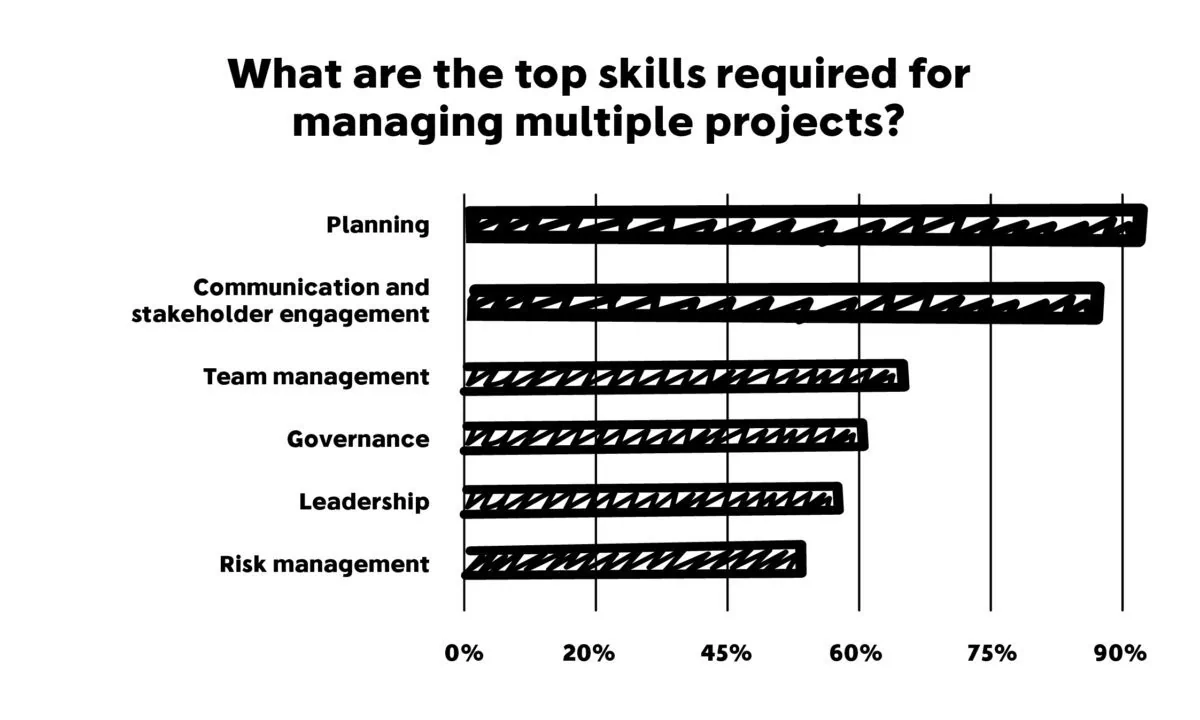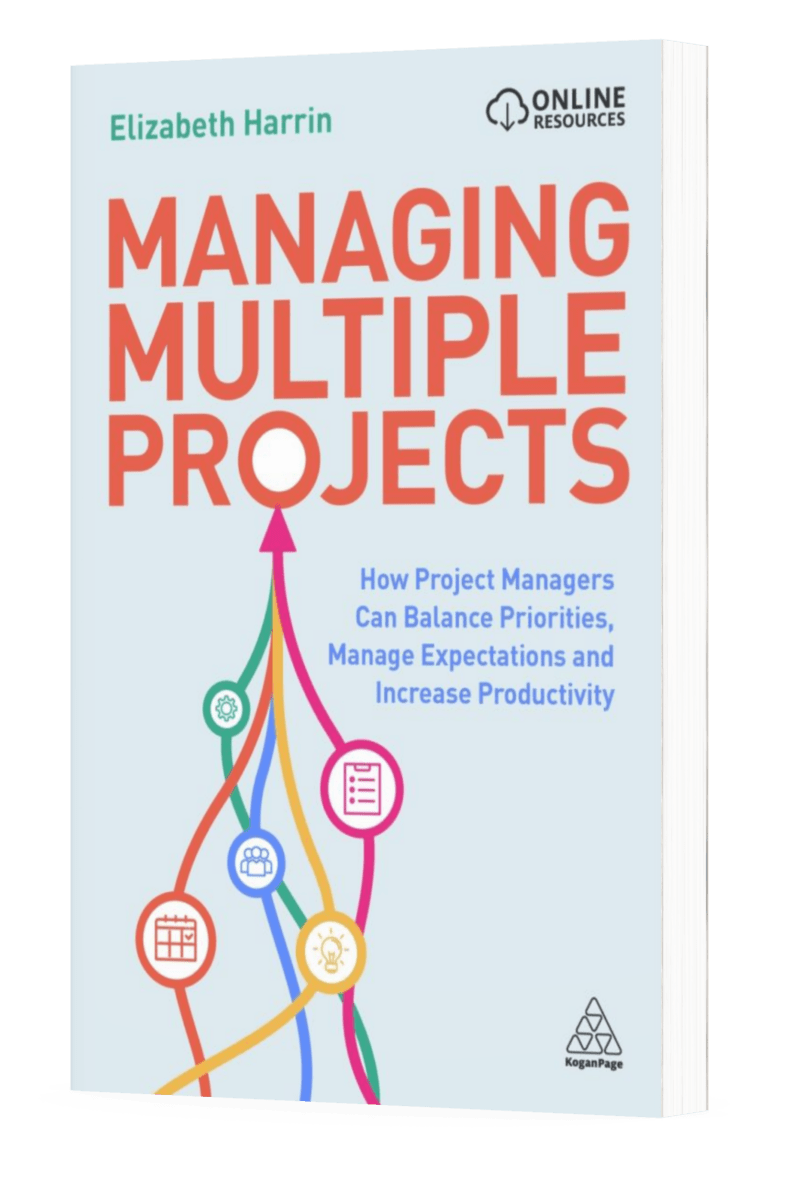How to Thrive in the Multi-Project Workplace
This blog is reader-supported. When you purchase something through an affiliate link on this site, I may earn some coffee money. Thanks! Learn more.
Around a third of the gross domestic product (GDP) in the average Western economy is a result of project activity so it is unsurprising that organizations do so many projects. They are the way strategy gets delivered, and in what PMI calls the ‘project economy’, it’s likely that organizations will continue to deliver work through the structure of projects.
However, because there are so many projects, we all often have to contribute (or lead) several at a time. That makes multi-project management an expectation in many roles, so let’s unpack that for a moment.
If you are managing multiple projects, it means you have more than one project on the go at the same time. You’ll have different project teams (even if the people on them are the same people). You might have different sponsors or customers, all with their own expectations of what’s possible, and probably the belief that their project is the most important.
Each project has its own timeline and you have to manage your time to keep them all moving forward to hit the planned deadlines and milestones. This workload is different from the workload of someone managing a single project, or carrying out their day job. There are more moving parts and normally more people involved.
Managing multiple projects is different from having responsibility for just leading one project. That’s not to say that leading a single project is easy: the larger the project, the more complex and strategically important it tends to be, and that comes with its own stressors.
What a multi-project environment looks like
A multi-project environment features the following:
- A large number of unrelated stakeholders who need to be engaged in various, sometimes isolated, sometimes connected activities
- More project sponsors to please
- More expectations to meet
- Project teams made up of part-time resources who also have a day job to do that takes priority over their project work
- More resource conflicts to resolve, often with subject matter experts booked to work on multiple projects who then struggle to see their whole work commitments and aren’t able to complete their tasks in the timeframe they expected
- Constant pressure from deadlines instead of the comfortable ebb and flow of busy and not-so-busy points on a single project: every month one of your projects is beginning, completing or hitting some major milestone.
A workload that includes multiple projects also requires a slightly different take on the core skills that are used to manage a single project. It’s not a totally new skillset, but it’s a smarter, more complex way of addressing the work and the complexities of balancing many people, processes and products. Every day is a balance between doing something to advance your own To Do list, and supporting your team and colleagues with their work. What should you be focused on? How do you choose what to do first? How can you use what you already know to make this easier? Those are some of the challenges of delivering multiple projects.
Whether you have the job title of project manager or not, you could have a workload made up predominantly of projects. Perhaps the bulk of your time is spent in an operational role, with the expectation that you will manage projects around the edges of that.
You may find that your project workload changes from time to time depending on what your organization requires of you. For example, a finance manager may find themselves spending more and more time on improvement projects during the majority of the year, and then be fully focused on year-end accounting when it’s time to do the books for the past 12 months.
If you’ve only recently been given a couple of projects to manage, you might be feeling OK about your workload at the moment, whatever it looks like. The default approach most people use is to replicate the same methods as you use to run a single project. Just repeat exactly what you are doing for your first project, using the same approach, tools and techniques.
However, it won’t be long before you start to feel that you don’t have time to do everything to the level of quality you expect of yourself. You recognize that things aren’t going as well as they could, and you feel it should be easier to work efficiently with a multi-project workload.
Skills for managing multiple projects
To thrive in a multi-project job, you need different skills – or at least the ability to apply your project management skills in a different way. Perhaps unsurprisingly, in a survey for my book Managing Multiple Projects, planning and stakeholder engagement came out as the top skills required for people managing multiple projects, closely followed by team management. In fact, survey respondents recognized over 60 different skills, from attention to detail to vendor management.

That’s a lot to factor in to every working day. While we don’t get up in the morning and say, “Today I’m going to use my attention to detail,” we cycle through a huge number of professional skills each and every hour so the job gets done.
People are an important part of making sure multiple projects stay on track, and are delivered in an efficient way, but there is something else that will help you thrive in a multi-project environment, and that’s prioritizing. Make sure you know what your top priority work commitments are. Then line up everything behind those so you have enough time and the right resources to see them through.
Share your personal priorities and team priorities with your colleagues so they know what is important – and, crucially, can redirect your efforts if you’ve misunderstood something.
There is the expectation that we’ll juggle more and more projects at work as organizations expect more from leaders and deliver parallel changes. However, we can step up to meet those expectations with the right skills and support.
Get Your Copy
Managing Multiple Projects: How Project Managers Can Balance Priorities, Manage Expectations and Increase Productivity is a book that offers a comprehensive framework for juggling your workload and still leaving the office on time.

